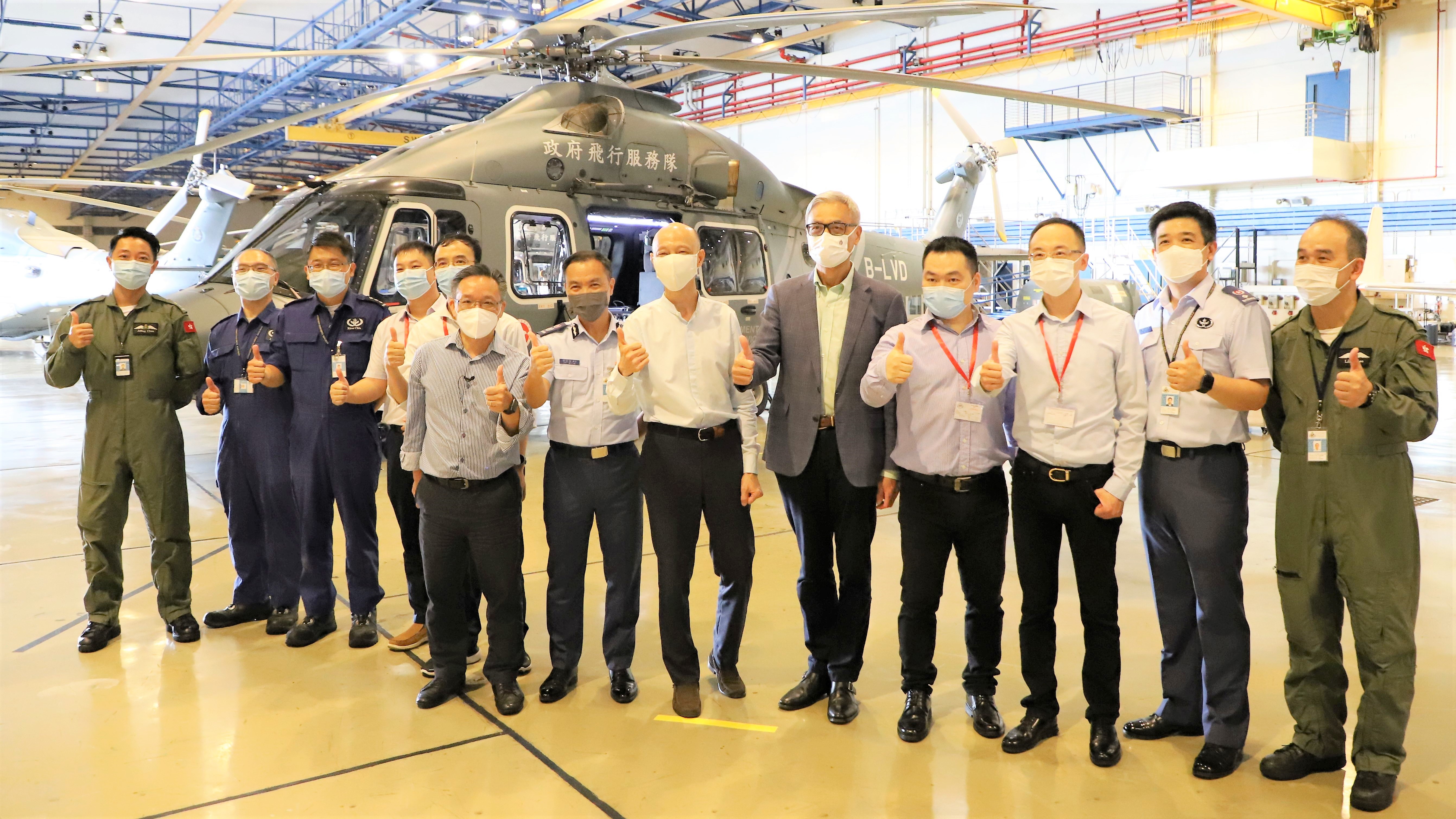
Tackling
regional ozone
![]()
HKUST Institute for the Environment is partnering with the Hong Kong Special Administrative Region (HKSAR) Government in a 3-year groundbreaking cross-border study to monitor the air quality on land, at sea and in the air, which will give us a more in-depth understanding of the formation and transportation of ozone in Hong Kong and across the Greater Bay Area (GBA).
This partnership is part of the wider initiative “Characterization of Photochemical Ozone Formation, Regional and Super-Regional Transportation in the Greater Bay Area” that is jointly launched among the governments of Guangdong, Hong Kong and Macao in studying ozone pollution, a regional air quality problem impacting various parts of the region.
Air pollution is the world's largest environmental health threat contributing to 7 million annual premature death worldwide. The Environmental Protection Department (EPD) of the HKSAR Government recently released the “Clean Air Plan for Hong Kong 2035” to help further improve the city’s and the region’s air quality, as well as helping the city to reach carbon neutrality by 2050. While great strides have been made in recent years on controlling health relevant air pollutants such as particulate matter (PM), sulphur dioxide (SO2) and nitrogen dioxide (NO2), the level of ozone - a key component of regional photochemical smog, is still trending upwards.
Unlike directly emitted air pollutants, ozone is a pollutant formed in the air by photochemical reactions between the precursors including nitrogen oxides and volatile organic compounds (VOCs). VOCs consist of hundreds of compounds released from a wide range of manmade and natural sources. The complexity of these different compounds and their roles in ozone formation makes it very difficult for the forecasting and control of the ozone levels in Hong Kong.
Fig. 1: Secretary for the Environment Mr. WONG Kam-Sing (6th Right), HKUST President Prof. Wei SHYY (5th Right), Associate Professor of Environment and Sustainability at HKUST Prof. NING Zhi (4th Right), and other team members from the EPD and GFS.

 |
 |
 |
Fig. 2 (left): HKUST researchers utilize advanced air sensing systems to monitor air quality on land, at sea, and in the air.
Fig. 3 (middle): HKUST researchers install the air-monitoring equipment on a modified helicopter.
Fig. 4 (right): Secretary for the Environment Mr. WONG Kam-Sing (Back Left), HKUST President Prof. Wei SHYY (Back Right), and Associate Professor of Environment and Sustainability at HKUST Prof. NING Zhi (Front Right) takes a helicopter ride late last month to learn about the research progress.
Using the state-of-the-art technology, a research team co-led by Prof. NING Zhi, Associate Professor, and Prof. Dasa GU as well as Prof. Zhe WANG, Assistant Professors of the Division of Environment and Sustainability at HKUST, have instigated a series of investigations in collaboration with the EPD and the Government Flying Service (GFS) since August to develop the monitoring and sampling system for the capture and measurement of vertical and spatial nature of ozone, as well as the key precursors critical for ozone formation and transportation.
“Thanks to the collaboration of GFS and HKUST team, we could conduct simultaneous air quality monitoring work on land, at sea and in the air within GBA for the first time,” said Dr. Kenneth LEUNG Kai-Ming, EPD’s Principal Environmental Protection Officer (Air Science).
Prof. Ning added, “The large-scale cross-border study is an important milestone for ozone research in the region, and we are pleased to work with local experts to contribute our efforts and transform the scientific knowledge into actions for evidence-based policymaking and improve the environment of Hong Kong as well as the GBA.”
Using ocean-going vessels and helicopter fleets fitted as mobile monitoring platform to carry advanced air sensing systems, HKUST researchers measure the real time levels of various air pollutants (e.g., NOx, CO, O3, VOCs) and particulate matter (PM10, PM2.5) over Hong Kong waters and in airspaces between the ground and 600-meter altitude. Air samples were also taken to analyze the ozone formation-related VOC species. The team will also coordinate with local and GBA researchers on tracing the sources and transportation of the pollutants that cause ozone pollution in Hong Kong. The findings will play a vital role in the formation of science-based policy for effective control of ozone in the region.
![]()
Publicity &
Media Coverage
- 明報 – 科大研大灣區污染 海陸空監測臭氧影響
- 香港電台 – 黃錦星冀透過區域協同 早日達致清新空氣藍圖願景
- 星島日報 – 科大飛服隊海陸空監測空氣
- 頭條日報 – 科大飛服隊海陸空監測空氣
- 巴士的報 – 科大飛服隊海陸空監測空氣
-
香港新聞網 – 香港特區政府與港科大合作研究大灣區臭氧問題
-
南方都市報 – 致力消除臭氧污染!香港科技大学与香港特区政府展开合作
-
文匯報 – 夥環保署飛服隊 科大海陸空監測空氣
-
大公報 – 聲學相機/飛服隊改裝直升機 半空測臭氧
-
東方日報 – 海陸空監測採樣 遏空污嚴控臭氧
-
香港商報 – 科大與港府合研大灣區臭氧
-
Mirage News – HKUST Collaborates with HKSAR Government on Solving Regional Ozone Pollution in Greater Bay Area
-
ET Net – 半空實測空氣污物 尋臭氧元兇 港府夥科大 改裝直升機追蹤
-
TOPick –【空氣質素】黃錦星昐善用創新科技及區域協同 早日達致清新空氣藍圖願景
-
政府新聞網 – 創新舉措應對環境挑戰
-
OpenGov Asia – HKUST and HKSAR Using Tech to Solve Ozone Pollution in GBA
